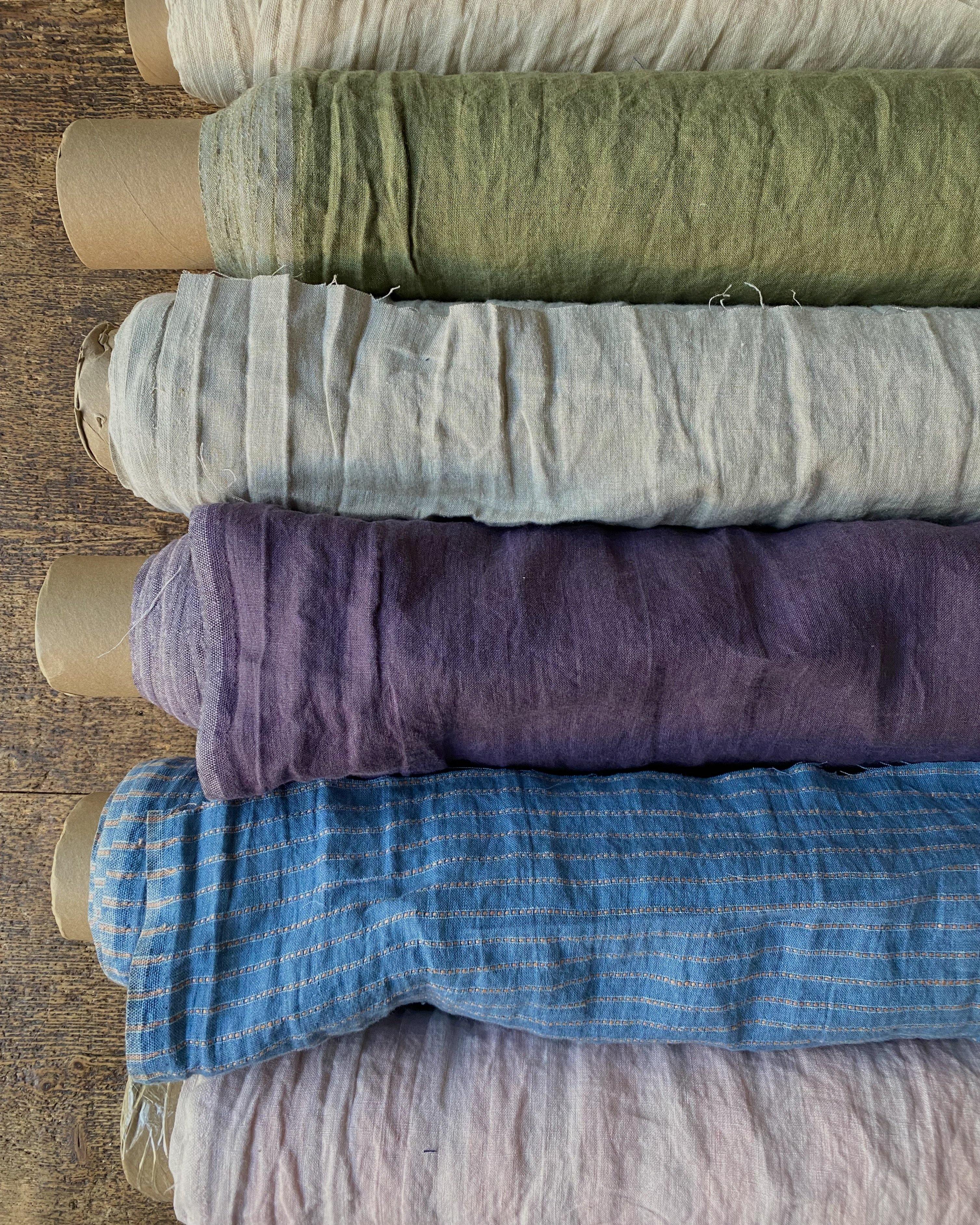Here at Pyne & Smith we love linen and believe it doesn’t get the attention it fully deserves, so we decided to highlight some facts about linen that you may (if you're already a linen lover) or may not know yet.
Warning: after reading this you will become a fellow linen fanatic.
1. Linen is environmentally friendly
This is our favourite fact that proves how remarkable linen truly is.
Linen originates from the flax plant, which uses almost no energy or water consumption during cultivation. Other fabrics, like cotton, require a high of amount of irrigation, whereas flax thrives on rainwater alone! In fact, 80% of linen’s energy consumption results from it being used throughout its lifetime (reminder: you don’t need to wash your P&S very often! Sometimes just spot cleaning or washing the arm area will help reduce your water/washing frequency).
On top of this, flax requires no fertilizer, herbicides or pesticides; meaning it doesn’t pollute rivers or groundwater. It can be grown in poor soil and after the plants are harvested, the roots remaining actually fertilize and clean the soil. Flax also retains 3.7 tons of CO2 per hectare per year.

2. Linen is biodegradable
Untreated linen can start to degrade in a few weeks when buried in soil and their molecules reabsorb into the earth in a matter of years, rather than centuries, and with no microfiber pollution particles that impact the environment.
3. Linen is hypoallergenic
It’s a great material for people with allergies or chemical sensitivities!
4. Linen has a long history of being used for medical care
Linen is naturally antibacterial and pathogen-resistant – it absorbs and wicks away moisture without holding bacteria, which is why it has been used as bandages for thousands of years. Linen’s natural resistance to fungus and bacteria has also made it a popular fabric for underwear throughout the years…
5. Linen is ancient and was the most prominent fabric throughout history
The oldest linen samples were found in Swiss lake dwellings in 8,000 BC. It was also commonly used in Ancient Egypt. The oldest woven dress, the Tarkhan dress (sometime between 3482 BC and 3102 BC), was made of linen. Linen was the most popular and widely used fabric throughout human history until the Industrial Revolution when an emergence of spinning machines and North America’s large cotton plantations meant that cotton became the more affordable choice.
6. Belfast used to be nicknamed “Linenopolis”
In the 18th century, Ireland was the largest linen producer in the world. Belfast was the linen capital and acquired the nickname "Linenopolis”. There is a great museum in Belfast that shows how linen was produced. It’s called the Irish Linen Centre & Lisburn Museum, if you happen to visit Belfast.
7. Linen is the second strongest natural fibre in the world
Linen is a very strong fabric and actually gets 10% stronger when wet. It’s also 30% stronger than cotton! Linen is a very durable fabric and unlike other fabrics it doesn’t pill over time. The more its worn and washed, the softer and more luxurious it gets.

8. Linen keeps you cool in the summer and warm in the winter
Linen is breathable and wicks away moisture, making it an ideal fabric for both hot weather and cold weather. It’s a good heat conductor and in hot weather it is airy, light and keeps dry and cool. Linen is also a natural insulator and in colder weather it wicks away moisture and traps warmth if you add a layer over it, keeping you dry and warmer than other fabrics like synthetics or cotton that can trap moisture.
9. Linen comes from a zero waste crop
Every part of the flax plant can be used to make a product. The stem fibres and seeds can be made into linen textiles, paper, animal feed, linseed oil, varnish and bio-materials.
10. Linen is a natural insect repellent
Linen is naturally moth-repellent. Goodbye holes!
P&S Bonus fact:
Pyne & Smith founder, Joanna, became obsessed with linen after researching fabrics to help escape the boiling summers in California. The more she learned about linen the more she loved it. She even has a flax plant tattoo!
